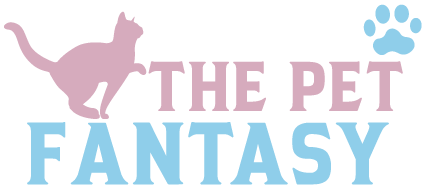Feline Stress Management Guide
About the Feline Stress Management Guide
The Feline Stress Management Guide is a vital tool for cat owners to assess and address feline stress, promoting a healthier and happier life for their pets. Provided by The Pet Fantasy, this calculator evaluates stress based on behavioral signs, environmental factors, health status, and interaction changes, offering tailored recommendations to reduce anxiety. Understanding Cat behavior is key to recognizing stress, as cats often hide discomfort, making tools like this essential for proactive care.
Importance of the Feline Stress Management Guide
Feline stress is a prevalent issue that can lead to behavioral and physical health problems, such as inappropriate elimination, aggression, or chronic illnesses like feline lower urinary tract disease (FLUTD). The Feline Stress Management Guide is crucial because it empowers cat owners to identify stress early and implement effective strategies to mitigate it. Chronic stress elevates cortisol levels, weakening the immune system and increasing susceptibility to infections. By assessing factors like behavior and environment, the tool helps prevent stress-related conditions, improving your cat’s quality of life and strengthening the pet-owner bond.
Cats are sensitive to changes in their surroundings, and stressors like loud noises, new pets, or health issues can significantly impact their well-being. The Feline Stress Management Guide provides a structured approach to evaluate these factors, offering practical solutions like environmental enrichment or veterinary consultation. For example, a cat hiding frequently due to a new household member may benefit from a safe space and pheromone diffusers. Resources from The Pet Fantasy emphasize the role of stress management in feline health, aligning with insights from Cat behavior. Early intervention can prevent long-term health issues and enhance your cat’s happiness.
[](https://www.southernazvets.com/cracking-the-code-7-signs-of-feline-stress/)User Guidelines for the Feline Stress Management Guide
To use the Feline Stress Management Guide effectively, follow these steps:
- Observe Behavioral Signs: Note any stress-related behaviors, such as hiding, aggression, or excessive vocalizing, and select the appropriate level (severe, moderate, mild, or none).
- Assess Environmental Stressors: Identify changes or disturbances in your cat’s environment, such as noise, new pets, or household changes, and choose the level (high, moderate, or low).
- Evaluate Health Status: Consider your cat’s health, selecting poor, fair, or good based on veterinary records or visible symptoms.
- Monitor Interaction Changes: Observe changes in how your cat interacts with you or other pets, selecting significant, moderate, or none.
- Input Data: Fill in all fields accurately and click “Generate Stress Management Plan” to receive tailored recommendations.
This tool is a guideline, not a substitute for veterinary advice. For severe stress or health concerns, consult a veterinarian. For insights into feline stress signals, visit Cat behavior.
[](https://todaysveterinarypractice.com/sponsored/5-tips-for-managing-feline-stress/)When and Why You Should Use the Feline Stress Management Guide
Use the Feline Stress Management Guide in the following scenarios:
- Behavioral Changes: If your cat shows signs like hiding, urine marking, or aggression, assess stress to identify causes and solutions.
- Environmental Changes: After moving, introducing new pets, or experiencing household disruptions, use the tool to evaluate their impact.
- Health Concerns: If your cat has chronic illnesses or pain, check how health-related stress affects their behavior.
- Routine Monitoring: Regularly assess your cat’s stress levels to maintain their emotional and physical health.
- New Cat Owners: If you’re new to cat care, use the tool to understand and manage your cat’s stress proactively.
The primary reason to use this tool is to enhance your cat’s well-being by addressing stress before it escalates into serious health or behavioral issues. Stress can disrupt Cat behavior, leading to problems like reduced appetite or social withdrawal. The Feline Stress Management Guide helps you create a calming environment and implement strategies like food puzzles or pheromone products, as recommended by The Pet Fantasy. Proactive stress management fosters a stronger bond with your cat and promotes a healthier life.
[](https://todaysveterinarypractice.com/sponsored/5-tips-for-managing-feline-stress/)Purpose of the Feline Stress Management Guide
The Feline Stress Management Guide serves multiple purposes to improve feline health and owner awareness:
- Assess Stress Levels: Evaluate behavioral, environmental, health, and interaction factors to determine your cat’s stress level.
- Provide Tailored Solutions: Offer recommendations like environmental enrichment, nutritional support, or veterinary consultation to reduce stress.
- Prevent Health Issues: Mitigate stress-related conditions like FLUTD, obesity, or weakened immunity through early intervention.
- Educate Owners: Raise awareness about feline stress signs and management techniques for better pet care.
The tool aligns with veterinary recommendations for managing feline stress, ensuring that owners can address both physical and emotional needs. By providing actionable advice, it empowers owners to create a stress-free environment, as supported by insights from Cat behavior.
[](https://www.dvm360.com/view/managing-feline-stress-related-conditions)Why Feline Stress Management Matters
Feline stress management is critical because cats are highly sensitive to their environment and often hide signs of discomfort, making stress difficult to detect without close observation. Chronic stress can lead to physical issues like gastrointestinal problems, skin disorders, or urinary tract issues, as well as behavioral problems like aggression or inappropriate elimination. The Feline Stress Management Guide helps owners identify these risks early, offering strategies to create a calming environment and reduce stressors. For example, a cat stressed by loud noises may benefit from a quiet safe space and calming supplements.
Effective stress management also strengthens the pet-owner bond by fostering positive interactions and reducing behaviors that strain relationships, such as urine marking or scratching. The tool considers health and interaction changes, recognizing that underlying medical conditions can exacerbate stress. By addressing these factors, owners can improve their cat’s emotional and physical health, as highlighted by The Pet Fantasy. Understanding Cat behavior is essential for tailoring interventions, ensuring that your cat thrives in a stress-free environment.
[](https://tamberly.vet/understanding-pet-stress-and-anxiety-your-comprehensive-guide/)